What We Offer
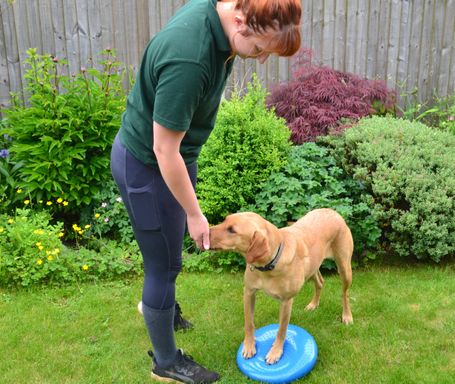
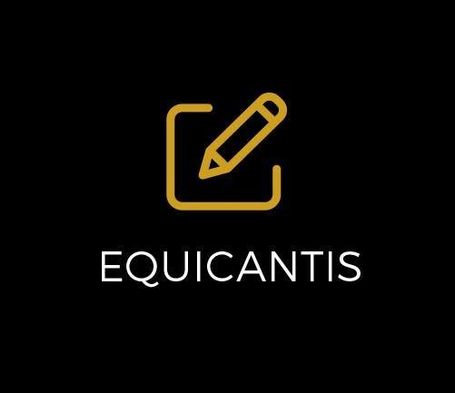
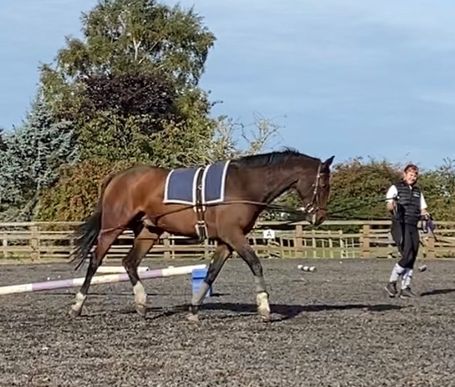
Exercise Prescription
Rehab exercises, asking our animals to move in a specific controlled manner.
The stronger our animals are the more we can help tham be comfortable in their movement. If this be post op, or adapting their gait and movement to enhance their ability or comfort level. Everyone wants to move in the easiest way possible and that goes for our animals too! Sometimes we have to make it a little bit hard to make everything easier in the long run.
Equicantis
I started using equicantis earlier in 2023, it has made my life as a physio so much easier as I don't have to describe the exercises anymore as equicantis provide the videos for my clients. And clients find it much easier to copy from a video instead of trying to remember where to put yourself, while trying to get your pet into position as well. Equicantis also allows me to tailor each plan to every dog and horse, their fitness, age or pain level and adapt the plans whenever we need.

Indiba Radiofrequency therapy
INDIBA is radiofrequency therapy . It is based on capacitive and resistive electric transfer , a form of RF therapy that delivers controlled radiofrequency energy to tissues, stimulating cellular activity and promoting healing at 488hz.
How It Works:
The INDIBA devices operate at a specific radiofrequency of 448 kHz, which enhances the natural processes of the body:
- Capacitive mode (CET): Targets superficial tissues like the skin and fat.
- Resistive mode (RET): Works on deeper tissues, such as muscles and joints.
Benefits of INDIBA Therapy:
- Non-invasive
- Reduces pain and inflammation
- Speeds up recovery and enhances mobility
- Improves joint health with conditions such as arthritis
- improves performance
- Helps fibre patterns in tendon and ligament recovery
- Improves muscle health, releasing toxins and stimulating repairs of tears
- Reducing scar tissue even in historic injuries
- Can treat at day 1 of injury with subthermal (non heating) treatments
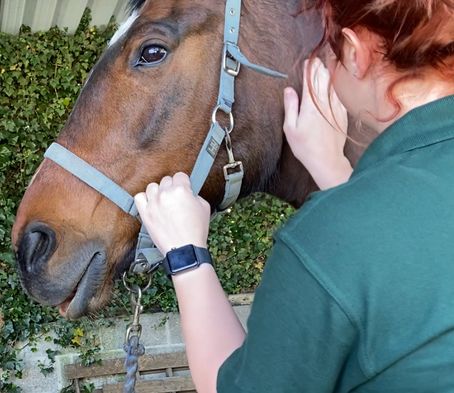
Manual Therapies
Manual therapies in physiotherapy are hands-on techniques and interventions that are used to treat, and manage a variety of musculoskeletal and neuromuscular conditions. These techniques and done by hand or a manual tool, to manipulate, mobilise, massage, and assess the patient's body. Manual therapies are an integral part of physiotherapy and can be used for pain relief, improving mobility, enhancing tissue healing, and optimizing overall physical function. Some manual therapies we offer are:
Joint Mobilization: This involves applying controlled movements to a joint to restore its normal range of motion, reduce pain, and improve joint function. It is often used for conditions such as osteoarthritis, frozen shoulder, and spinal joint dysfunction.
Joint Manipulation: A high-velocity, low-amplitude thrust is applied to a joint to improve joint mobility and reduce pain. It is typically used for spinal conditions, such as vertebral subluxations.
Soft Tissue Mobilization: Techniques like myofascial release and deep tissue massage are used to manipulate and release tension in muscles, fascia, and connective tissues. They can help with muscle pain, scar tissue, and adhesions.
Myofascial Release: Treating myofascial pain and dysfunction. It focuses on the fascia, a connective tissue that surrounds and interconnects muscles, bones, nerves, blood vessels, and organs throughout the body. Myofascial release aims to release tension, restrictions, and adhesions within the fascia to improve mobility, reduce pain, and enhance overall function
Manual Lymphatic Drainage: This gentle, specialized massage technique is used to promote lymphatic fluid movement and drainage. It can be beneficial for reducing oedema (swelling) and managing lymphedema.
Craniosacral Therapy: A gentle, hands-on approach that focuses on the craniosacral system, which includes the membranes and cerebrospinal fluid surrounding the brain and spinal cord. It is believed to improve the body's self-healing abilities and alleviate a range of conditions.
Trigger Point Therapy: The therapist applies pressure to specific areas of muscle (trigger points) to release tension, reduce pain, and improve muscle function.
Neural Mobilization: Techniques used to mobilise and release tension in neural structures (nerves).
The choice of manual therapy techniques depends on the patient's specific condition and needs. Manual therapies are used in conjunction with other physiotherapy modalities, exercises, and rehabilitation programs to provide a comprehensive approach to pain management, injury recovery, and physical function improvement.
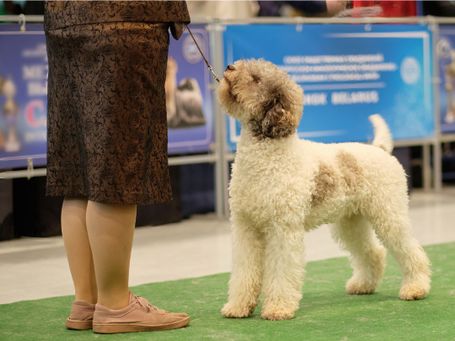
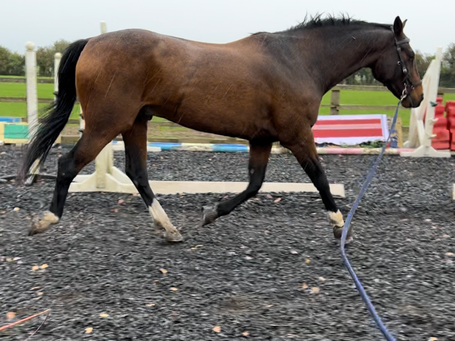
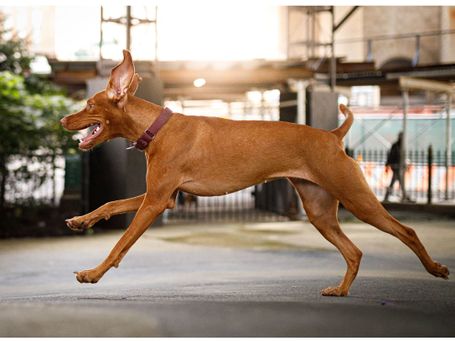
Gait Assessment
Each session will involve gait assessment. This involves Static and Dynamic Gait Assessment.
Static assessment: This is your animals conformation, how they stand, their posture. if they are favouring a leg, more muscle over one area, any natural deformities that may be hindering their ability to perform, or predispose them to disease.
Dynamic assessment: This is how they move, their gait pattern, if they are patterning correctly, their straightness, any lameness, their natural range of motion, any neurological abnormalities etc.
This may consists of a walk and trot in a straight line, small circles, sit to stands and other movements in more healthy animals. If your animal is coming for post OP or a chronic debilitating injury and condition they will only be asked to do what they can manage.
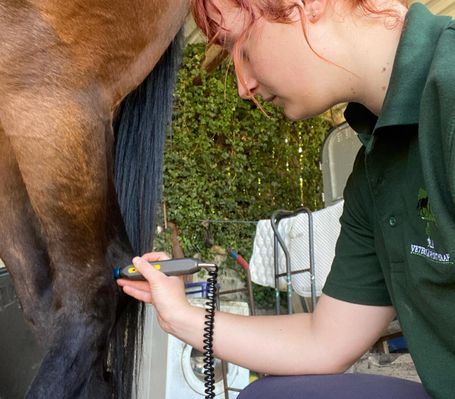
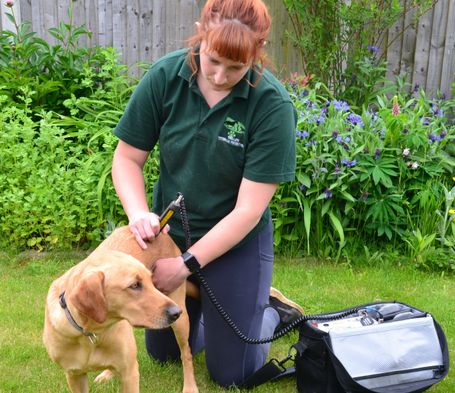
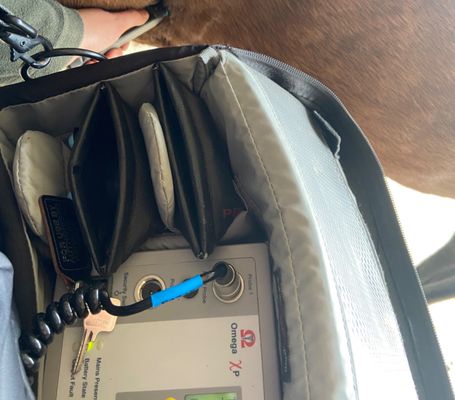
LLLT Low Light Laser Therapy
I have a OMEGA Class 3b laser, LLLT has many uses, please get in touch for the options that would be best for you and your animal.
Pain Management: alleviate pain, particularly for musculoskeletal conditions. It can help reduce inflammation and promote the release of endorphins, which are natural pain-relieving chemicals in the body. This can be beneficial for animals with arthritis, joint pain, injuries or other pathologies.
Wound Healing: Accelerated wound healing. It enhances the production of collagen and stimulates cell proliferation, which promotes tissue repair.
Reducing Inflammation: The anti-inflammatory effects of LLLT can be helpful for animals with inflammatory conditions..
Improving Circulation: LLLT can enhance blood circulation in the treated area, which can be beneficial for animals with circulatory problems or conditions that require improved blood flow for healing.
Reducing Swelling: It can help reduce oedema and swelling , which is particularly useful for post-surgical recovery or injuries.
Nerve Regeneration: LLLT may assist in nerve regeneration, which can be crucial for animals recovering from nerve injuries or neurological conditions.
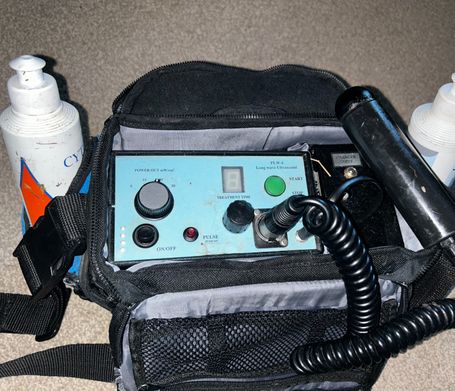
Therapeutic Ultrasound
Therapeutic longwave ultrasound uses sound waves with frequencies lower than 1 MHz for therapeutic purposes. This form of ultrasound is distinct from diagnostic ultrasound, which uses higher-frequency sound waves to create images of the body's internal structures.
Deep tissue heating: The sound waves produced by therapeutic ultrasound can penetrate deep into the body, reaching tissues such as muscles, tendons, and ligaments. This deep tissue heating can help increase blood flow and circulation, promoting the relaxation of tight muscles and reducing pain and muscle spasm.
Enhanced tissue healing: Therapeutic ultrasound is believed to promote the healing process by increasing the metabolic rate of cells in the treated area. This can aid in tissue repair and regeneration.
Increased tissue flexibility: The application of therapeutic ultrasound can help improve the extensibility and flexibility of connective tissues, which can be especially beneficial in reducing stiffness and improving joint mobility.
Pain management: The heat generated by therapeutic ultrasound can have a pain-relieving effect, as it helps to reduce muscle tension and spasm, making it a valuable tool for managing various painful conditions, including musculoskeletal injuries and chronic pain.
Reduction of inflammation: Therapeutic ultrasound may help to reduce inflammation and swelling by increasing blood flow and promoting the drainage of excess fluid from the affected area
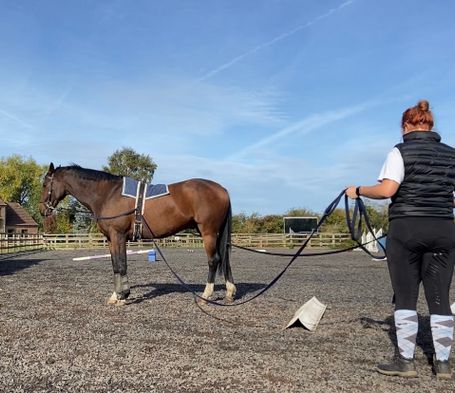
Groundwork Coaching
Sometimes groundwork is really tough to get our heads around and get right. I've spent the last few years playing with what works and what doesn't. We are taught with horses that we always need to be more forward, but sometimes we need to take some steps back before we can get forwards. Long reining and lunging without gadgets are vital for horses to be able to do comfortably to be ridden comfortably. Working out how to maintain a frame and balance, engage core and lift through their back.
Ground work sessions are around 30min-1hr depending on how much work the horse needs and what we are trying to achieve from the handler and horse.
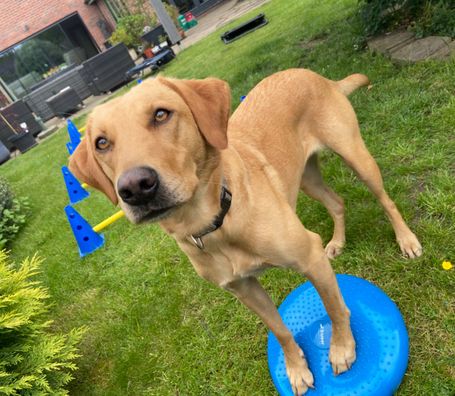
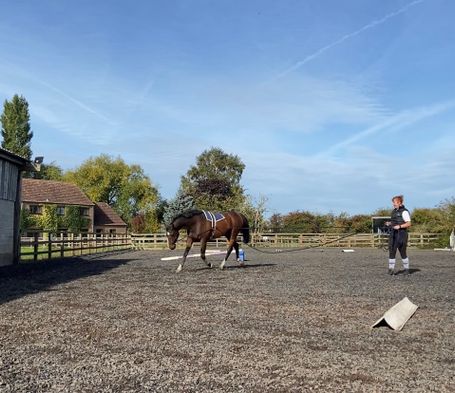
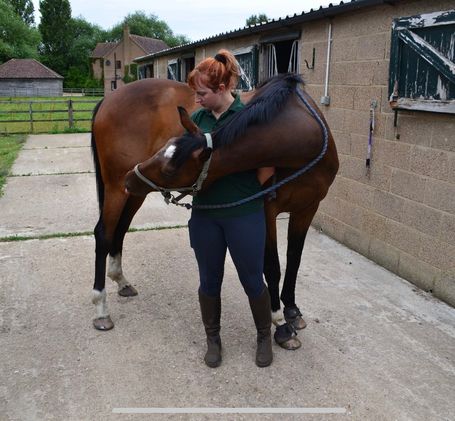
Tailored Rehab plans
Offering plans for every individual. This could be ridden exercises to enhance performance, very basic ground work for day 1 rehab all the way through to taking a rider again.
For dogs we offer pre and post op plans as well as conservative management for those dogs who can't be operated on. Exercise plans for sporting and non injured dogs, to strengthen, help prevent injury and encourage precision in movement for sporting dogs
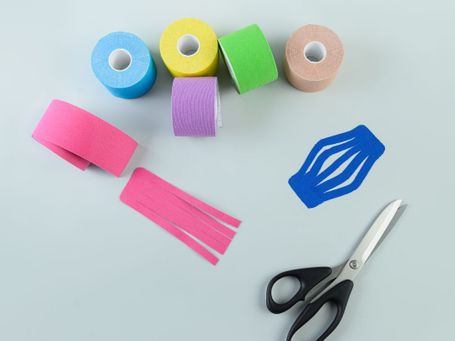
Kinesiology Taping
Kinesiology taping, often referred to as "k-taping" or simply "kinesio tape," is a technique that involves applying a specialised elastic tape to the skin to provide support and stability to muscles and joints, improve circulation, and promote healing and pain relief. This method was initially developed for human athletes but has also found applications in the animal world.
Muscle support and stability: Kinesiology tape is designed to mimic the elasticity of human skin and muscles. When applied to animals, it can help provide support and stability to muscles and joints. This can be especially beneficial for pets recovering from injuries, surgery, or musculoskeletal conditions. The tape can help maintain proper muscle alignment and reduce the risk of overstretching or straining.
Pain relief: Kinesiology tape can have a pain-relieving effect by lifting the skin and increasing space between the skin and underlying tissues. This can help reduce pressure on pain receptors, alleviating discomfort and improving an animal's mobility.
Improved circulation: The taping technique can promote blood and lymphatic circulation in the affected area. Enhanced circulation can aid in reducing swelling and inflammation and support the healing process in injured or inflamed tissues.
Lymphatic drainage: Kinesiology taping can be applied in a specific manner to encourage lymphatic drainage. This is particularly useful in cases where animals have oedema or swelling, as it can assist in reducing excess fluid build up.
Joint support: The tape can be used to provide additional support to weakened or injured joints. It can help stabilize the joint, reduce excessive movement, and improve joint function during rehabilitation.
Encouraging proprioception: Kinesiology taping can enhance proprioception, which is the body's ability to sense the position and movement of its limbs. This can be especially important for animals recovering from injuries, as it can improve their awareness and coordination.
We need your consent to load the translations
We use a third-party service to translate the website content that may collect data about your activity. Please review the details in the privacy policy and accept the service to view the translations.